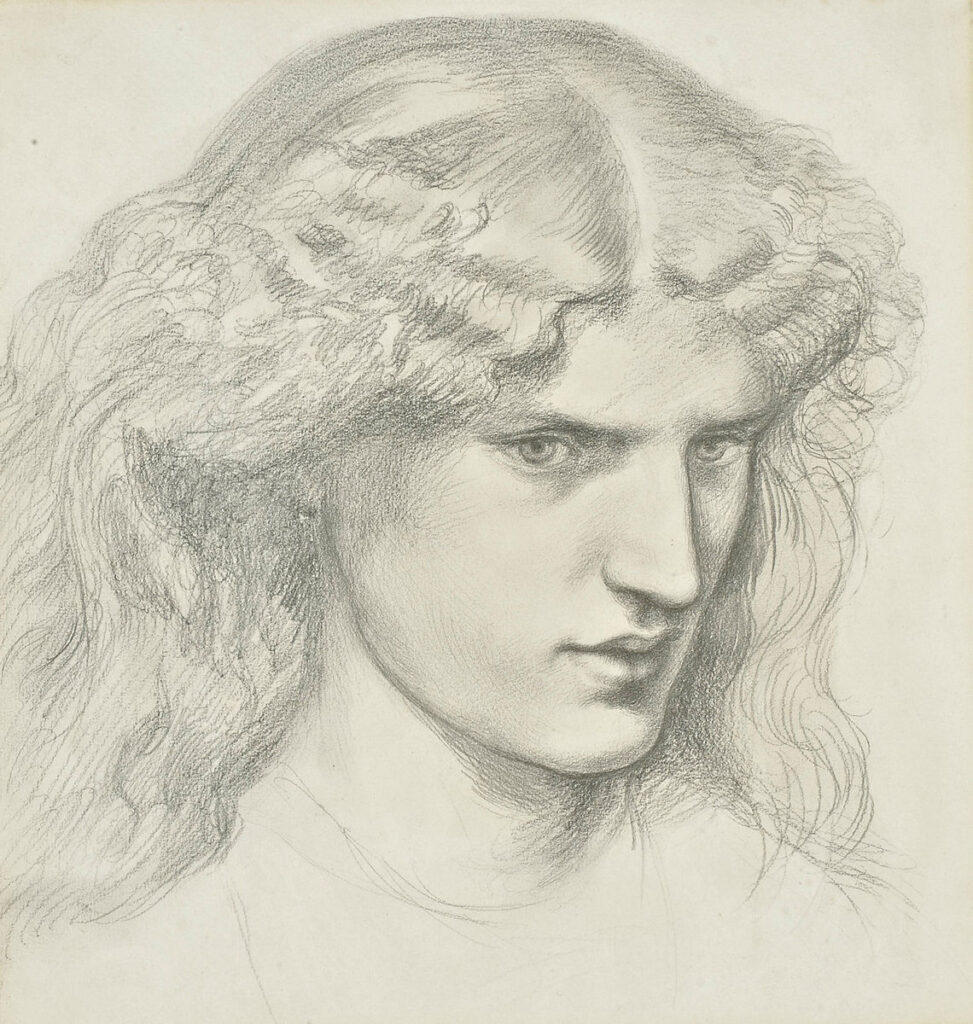Modeling rescued young Annie Miller from extreme poverty. After her mother’s death, Annie and her sister were raised by their aunt and uncle. Accounts of her childhood describe it as working class and “filthy.” By her teens, she was a servant and her family struggled to make ends meet.
Pre-Raphaelite artist William Holman Hunt discovered Annie living in a pub near his studio, and she first appeared in his work The Awakening Conscience (he later repainted her face, so we can no longer get a sense of Annie’s features in this work.)
Annie modeled for several artists, but shades of Pygmalion, the more she posed for Hunt, the more he longed to improve her life with the aim of marrying her. He arranged for her to learn to read and to take courses in deportment.
The Pre-Raphaelites strove to paint as realistically as possible, especially when depicting nature. As William Holman Hunt became increasingly interested in painting Biblical subjects, he traveled to the Holy Land to capture the light and ambience of the area.
While on this pilgrimage, Hunt left a list of instructions for Annie, including artists she was allowed to sit for in his absence. One of the artists Hunt definitely did not want Annie to spend time with was Dante Gabriel Rossetti.
Needless to say, strong-willed Annie did not obey. The two became close, much to the chagrin of Holman Hunt and Lizzie Siddal.
Annie and William endured a bitter breakup, and Annie eventually faded from the Pre-Raphaelite scene.
Thanks to the generous education Holman Hunt provided, Annie was able to achieve a higher social status and married Captain Thomas Renelagh Thomson. They started a family, and it seems her post-model life was a respectably comfortable one.
From urchin to model, and model to mother, no doubt Annie was in some part grateful to the role Pre-Raphaelite art played in building a better life for herself.


